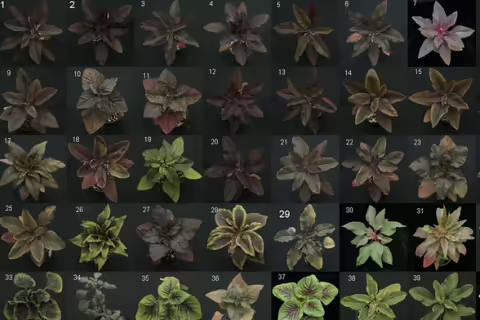
URBANA, Ill. – Artificial food dyes have been linked to multiple health concerns, including hyperactivity in children, allergies, and certain cancers. The science isn’t settled and the Food and Drug Administration says color additives are safe, but consumers are nonetheless clamoring for natural alternatives.
Recent University of Illinois research shows amaranth plants are a good source of red pigments called betalains, which could be used in a wider variety of food applications than other plant-derived pigments. The study, published in Frontiers in Plant Science, quantified betalain content in 48 amaranth varieties, providing the food industry with multiple promising candidates for future product development.
“Our paper serves as a global survey of vegetable amaranth to determine the diversity in hue, concentration, and chemical structure of magenta-red color compounds. It also provides methodology for accurate and high-throughput color quantification. This information builds a strong basis for additional work to investigate commercial scale-up and color performance in food applications,” says lead author Jay Howard, who completed the study as a master’s student in the College of Agricultural, Consumer and Environmental Sciences (ACES) at U of I. Howard is now applications manager at Kalsec Inc.
The researchers selected four dozen amaranth varieties from the USDA National Plant Germplasm System, representing a full spectrum of foliage coloration from deep burgundy to lime green. They grew the plants in a greenhouse and extracted pigments from stem and leaf tissue using a simple water method, in accordance with FDA guidelines. Then they fed the extracts through lab equipment to discover which betalain pigments were most prevalent.
Most food companies currently source betalains as a co-product from red beet production, but Riggins says beet-derived pigments have some drawbacks.
“Beets are off-putting for some people. Those earthy flavor compounds often get transferred in a basic betalain extract. So, food companies are really open to natural food colorants from alternative sources and doing it in a way that could extend applications for different food products,” he says.
The researchers did a basic taste and color test by mixing up a Kool-Aid-type concoction with their amaranth extracts. “A few were slightly reminiscent of beets, but mostly we couldn’t smell or taste anything,” Riggins says.
Read more from the College of ACES
Photo: Some of the amaranth plants tested in the study. Credit: College of ACES.